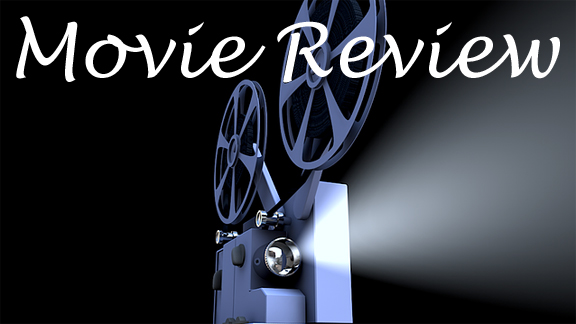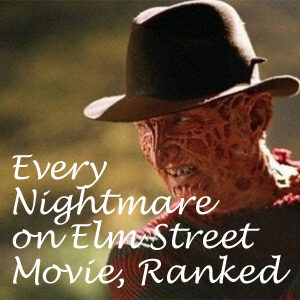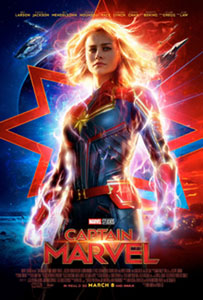It’s been a cliché for more than four decades now that spectacle can’t overcome a bad screenplay, but it’s still remarkable how many films can nail everything except communicating to a viewer what the heck is going on. With “Captain Marvel,” the fun and technically amazing 21st Marvel Cinematic Universe movie, I can’t discount that I may have spaced out on important details, but I do suspect I was spending too much time trying to figure out the nature of Carol Danvers’ (Brie Larson) superpowers rather than kicking back for the ride.
Back to 1995
The ride is a good one, though. “Captain Marvel” takes us back to 1995 as the Kree alien Veers – a.k.a. Captain Marvel, a.k.a. Carol Danvers, which is what I’ll call her for simplicity’s sake – crashes through the roof of a Blockbuster Video store.
While everyone loathed Blockbuster back in the day, we of course love it now because it no longer exists except in Bend, Oregon. S.H.I.E.L.D. agent Nick Fury (Samuel L. Jackson plus the truly incredible de-aging effect we also saw on Kurt Russell in “Guardians of the Galaxy Vol. 2” and Michael Douglas in “Ant-Man”) makes a quip about how to use the store’s after-hours drop box. Fury briefly attempts to arrest Carol before she takes off in pursuit of a shape-shifting Skrull. They are the enemies of the Kree.

“Captain Marvel” (2019)
Directors: Anna Boden, Ryan Fleck
Writers: Anna Boden, Ryan Fleck, Geneva Robertson-Dworet
Stars: Brie Larson, Samuel L. Jackson, Ben Mendelsohn
We get some great fights involving shape-shifters, including one on a commuter train where Carol exchanges martial-arts blows with an elderly woman. Carol’s fish-out-of-water position – wearing her superhero suit in a time before the rise of the Avengers – leads to funny looks from passers-by. Stan Lee’s cameo, a callback to a 1995 movie cameo, is one of my favorites.
1990s music cuts – “Only Happy When It Rains,” “Waterfalls” — introduce scenes, and even the climactic fight is backed by “Just a Girl.” Jackson is old-school cool as the shades-sporting Fury, and we learn some tidbits about him: Even his mom calls him “Fury,” he says, and he calls her “Fury” too. And the orange cat Goose steals scenes; I love the way classic tough guy Fury immediately bonds with Goose.
While the pacing could’ve used more energy at times, the tone of “Captain Marvel” – directed by Anna Boden and Ryan Fleck and written by five scribes – is consistently fun because of the staging of these sequences and the actors’ interplay.
Galactic-level stakes
The stakes are galactic-level, but the movie has an easygoing vibe, nicely enhanced during a mid-film retreat to a rural home. It’s not surprising that Jackson and Larson are good buddies in real life, as they showcase a comfortable chemistry here. Other strong turns come from Ben Mendelsohn as a Skrull warrior; Lashana Lynch as Maria Rambeau, Carol’s oldest friend; and Akira Akbar as Maria’s cute kid Monica, who looks up to Carol. Agent Coulson (Clark Gregg, de-aged) also gets some nice moments.

Carol’s superhero origin story is different from the norm, I’d argue in a good way – at least conceptually – and this is where a SPOILER WARNING is needed. She’s trying to piece together dream images to figure out her past as a human, not a Kree.
Some critics have argued that Carol is an uninteresting superhero because she’s always had powers (shooting plasma beams out of her wrists comes naturally to Kree), but there are ways to make super-powered people interesting, and “Captain Marvel” does it through the piecing together of Carol’s backstory. When we find out she is human, and was artificially given Kree power by the villainous Yon-Rogg (Jude Law), it’s a satisfying twist. It also repositions Mendelsohn’s Talos as a good guy, which is cool because I liked him more than Yon-Rogg anyway.
So Carol’s basic batch of superpowers were given to her by the Kree; that’s easy enough to grasp, even if the physiological explanation is “insert mumbo-jumbo here.” But later in the film, she acquires super-duper powers that basically make her Marvel’s equivalent of Superman. (Indeed, in the comics, Carol’s Kree name is Car-Ell, suspiciously similar to Kal-El; and Carol Danvers is darn close to Kara Danvers, Supergirl’s name.
Muddled details
Marvel and DC were notorious for copying each other, right down to such extreme details, back in the day.) She uses these powers, which crucially include the ability to breathe in space (or not need to breathe in space, as it were) to win the day much like Superman does in all of the Christopher Reeve films. This is where I either spaced out or the film fails to give a substantial account of how she gets this next wave of powers.
Perhaps related to the movie’s muddled details, Carol and Captain Marvel have perhaps the most convoluted backstory(ies) of any comic character(s). Invented in 1968, Carol was known as Ms. Marvel in the early days, and didn’t take up the mantel of Captain Marvel until 2012 – making her a rare MCU character whose identity was established after the MCU started in 2008 with “Iron Man.”
Then there’s also the history of the name Captain Marvel. Several other characters held this title before Carol, including a guy named Mar-Vell. As we find out in the film, the real name of Carol’s Air Force mentor Dr. Lawson (Annette Bening) is Mar-Vell. If that’s not crazy enough, Shazam – the DC character who will get his own movie next month – was originally called Captain Marvel, too.
“Captain Marvel” is fun to watch with your brain turned off, and Carol will be a welcome addition to the Avengers. When you turn your brain on, it’s not bad, either. I consider looking up comic lore about Carol and Captain Marvel to be enjoyable, rather than drudgery – to a point. While it’s perhaps fitting that a character with a convoluted comic history likewise has a confusing origin story on film, I do think “Captain Marvel” could’ve more crisply explained the details of her powers.

